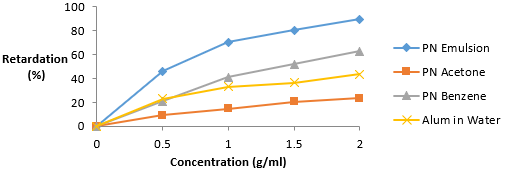Effect of Phthalonitrile and Alum on Flame Retardation Properties of 100% Cotton Fabric
Keywords:
Flame retardant, Phthalonitrile, Cotton fabric, Alum, Percent add-on, Flame and glow time, Char formationAbstract
Speculations have it that phthalonitrile imparts flame retardancy on substrates. This study aimed to investigate the activities of phthalonitrile as flame retardant on 100% cotton fabric. The fabric samples tested were cut into 25:4 x 7 cm pieces, scoured, dried, and weighed. They were then impregnated with different concentrations of phthalonitrile in different solvents (benzene and acetone) and emulsion alongside alum dissolved in water. At the same time, the untreated fabric was used as a control. All the impregnated pieces of fabric were dried at room temperature and reweighed. The fabrics were subjected to add-on%, after flame time, after-glow time, and % char formation tests. The results showed that cotton-tested flame retardant properties increase with the increase in the concentration of phthalonitrile. Phthalonitrile has flame retardant properties on 100% cotton fabric.

Published
How to Cite
Issue
Section
Copyright (c) 2022 E. U. Chukwuegbo, E. Agboeze, C. C. Ogbuanu, S. Amujiogu

This work is licensed under a Creative Commons Attribution 4.0 International License.
How to Cite
Most read articles by the same author(s)
- E. Agboeze, N. P. Ani, E. O. Omeje, Extraction and Characterization of Pharmaceutical Grade Microcrystalline Cellulose From Bambara Nut (Voandzeia Subterranean (L) Thousars) Husk , African Scientific Reports: Volume 1, Issue 2, August 2022




